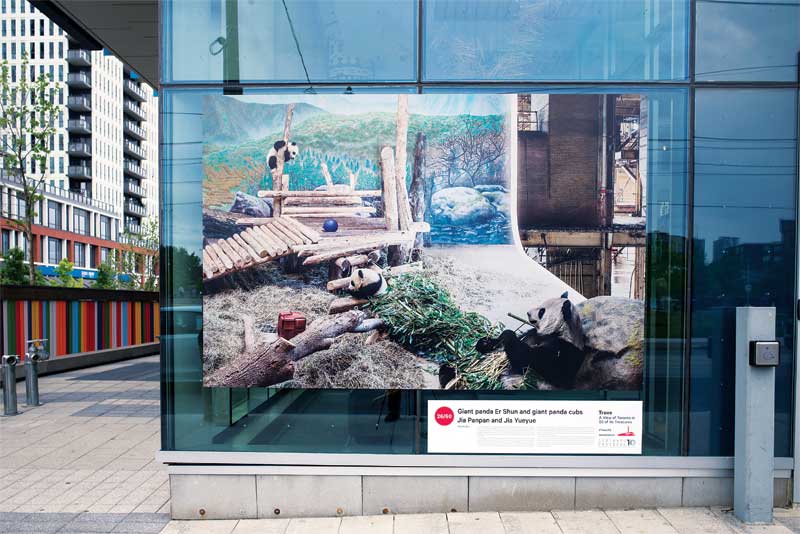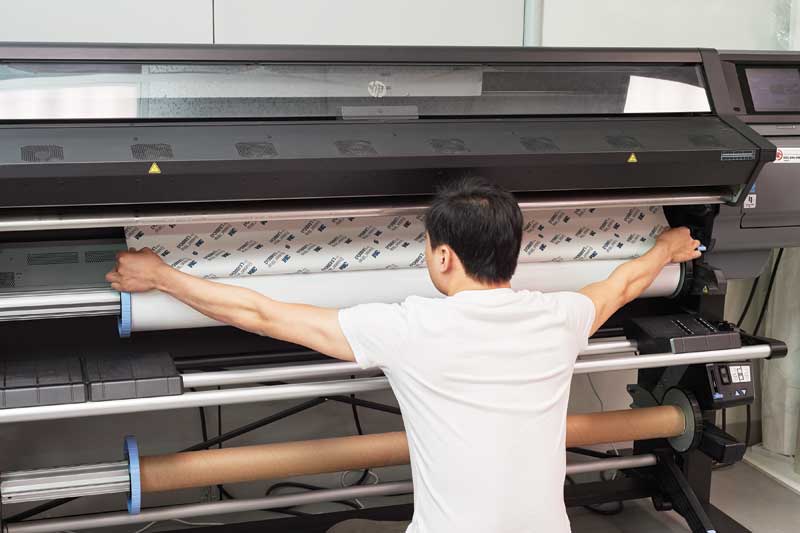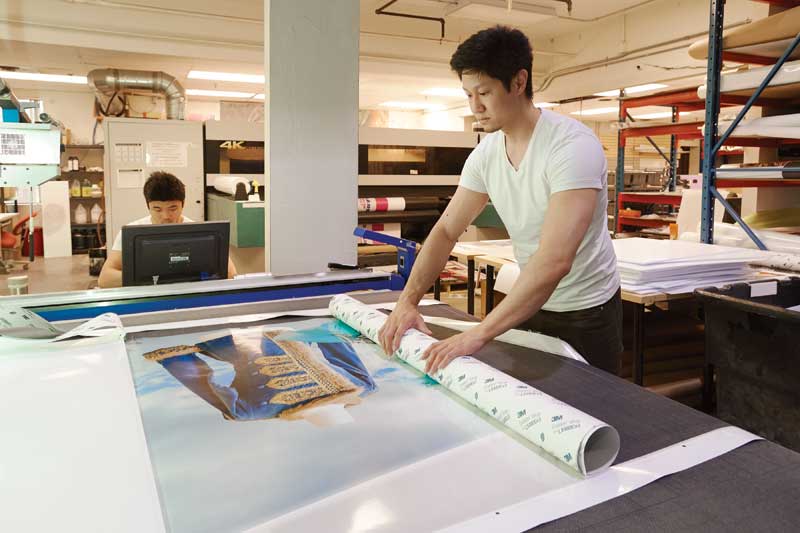
Photo by Jonathan Castellino, courtesy Luminato
By Peter Saunders
Earlier this year, for the 10th annual edition of Toronto’s Luminato festival of art and creativity, Beyond Digital Imaging (BDI) in Markham, Ont., printed and installed poster-size versions of photographer Scott McFarland’s series Trove: A View of Toronto in 50 of Its Treasures. The only place to see all 50 photos was at the central hub for Luminato 2016, the 65-year-old decommissioned Hearn Generating Station, but they could also be found throughout the city in public locations from June 10 to 26.
Choosing treasures
The project began with the notion of bringing the 50 most important objects, works of art and ideas in Toronto to the public. This would entail choosing ‘unseen’ treasures that sat within the walls of museums, institutions and private collections—where only those who know they are there could seek them out—and using the entire city as one enormous art gallery, with an exhibition of these treasures out in the open for everyone to see. In this way, the project would share what only a fraction of Torontonians knew about and celebrate what makes the city special.
“We looked far and wide and wrote to hundreds of people and museums and asked them for ideas,” says Jörn Weisbrodt, artistic director of the Luminato festival from 2011 to 2016, who curated the project and contracted McFarland for the photography. “We had to make choices. Not everything made the final cut. And the selection was not definitive or objective. It was highly personal and subjective. We did not want to come up with objective criteria, like monetary value, which would have excluded so many things. We instead applied more instinctive values, e.g. what would we save in an earthquake? What, pieced together, would paint a picture and tell a story of this city?”
Once they were selected, McFarland photographed the physical objects and works of art within their places of origin, in most cases in front of a neutral background.
“The objects were diverse and widespread, but as photographic images, it would become possible to bring all of them together in one exhibition,” says Weisbrodt. “It was the idea of freeing them from institutional walls, but nothing had to move.”

Beyond Digital Imaging (BDI) produced the graphics using a durable aqueous ‘latex’ inkjet printer.
Photos courtesy Beyond Digital Imaging
Proposing a gallery
Next, McFarland collaborated with architects from Toronto-based firm Partisans to develop a digital design of how an art gallery could be laid out inside the Hearn, which had been proposed as the site for Luminato’s first-ever residency. The plan, dubbed #TurnOnTheHearn, was to temporarily transform the former power plant into a cultural community centre, featuring a theatre, a music stage, a site-specific performance space, restaurants, bars and more.
Dubbed the ‘Hearn Jackman Gallery’ to acknowledge a donation from the Hal Jackman Foundation, McFarland and Partisans’ series of three-dimensional (3-D) renderings incorporated photos taken inside the actual station and vistas viewed from it, so as to achieve a more photorealistic effect overall. Then McFarland placed his photos of the objects in the 3-D renderings. The final images suggested how a gallery could be conceived of for the Hearn, with Partisans’ architectural design using the upper level of the facility’s former turbine hall.
“We explicitly did not want to divide up the objects into any categories,” says Weisbrodt. “We wanted to create free associations, counterpoints and surprise combinations that would invite audiences to develop their own narrative. And Scott’s images already gave a glimpse into curatorial decisions, as most images did not contain only one object, but also secondary objects in the background as you would see in a real gallery.”
That said, the treasures were ordered and grouped into a series of 14 sub-galleries or ‘pods,’ each with a title that picked up on some common threads and could invite further thought (see list on page 32). This became the order in which the poster-size images would be displayed inside the Hearn over a space spanning more than 270 m (886 ft) from west to east, while their outdoor counterparts would be scattered across the city.

The process had to be repeated several times to allow for sufficient colour corrections.
“Jörn really wanted to turn the city into an art gallery or a museum, filled with its most prized treasures,” says Swapnaa Tamhane, who was brought on as producer for the project. “In a way, the idea stemmed from wanting to celebrate the initial philanthropists who were involved in supporting Luminato through its first 10 years and their collections.”
“Trove is also a proposal for what a future gallery could look like inside the Hearn,”
says Weisbrodt.





